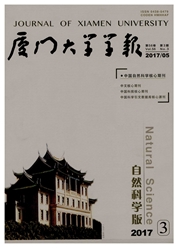

 中文摘要:
中文摘要:
甲壳动物的视神经节含有性腺抑制激素(Gonad inhibiting hormone,GIH),长期以来视神经节被理解为生殖抑制效应.本研究应用脊椎动物卵泡刺激素(Fllicle stimulating hormone,FSH)抗体和黄体生成素(Luteinizing hormone,LH)抗体,从锯缘青蟹(Scylla serrata)视神经节的视外储、视内髓和视端髓检测到FSH和LH免疫细胞化学阳性反应.锯缘青蟹视神经节中的FSH和LH免疫阳性物质,可能参与了生殖神经内分泌调节.
 英文摘要:
英文摘要:
In vertebrates, the gonadotropins are secreted by the adenohypophysis and are composed of the follicle stimulating hormone(FSH) and the luteinizing hormone(LH). These two hormones can combine with their receptors on the cytoplasmic membrane of gonadal cells, then stimulate the gonadal development and the production of the steroid hormones (estrogen and androgen). Thus, they have an important role in spermatogenesis and oogenesis. It is not yet reported whether FSH or LH exist in crustaceans. Optic ganglion is the source of Gonad inhibiting hormone in Crustaceans, so it has been regarded as the inhibting function in reproduction for long time. FSH and LH antisera generated in vertebrate and Strept Avidin-Biotin-Complex(SABC) immunocytoehemistry method were applied to observe the immunoreactive neurons and neuropils in optic ganglia of Scylla serrata. It showed that FSH and LH immunoreactive substances were located in medulla externa, medulla interns and medulla terminalis in optic ganglion. The results supply morphological proofs for the exsistence of FSH and LH analog in crustaceans. FSH and LH immunoreactive neurons in optic ganglia of Scylla serrata might participate in regulation of reproductive neuroendocrine. This study is helpful in understanding the reproductive neuroendocrinology of crustaceans.
 同期刊论文项目
同期刊论文项目
 同项目期刊论文
同项目期刊论文
 期刊信息
期刊信息
